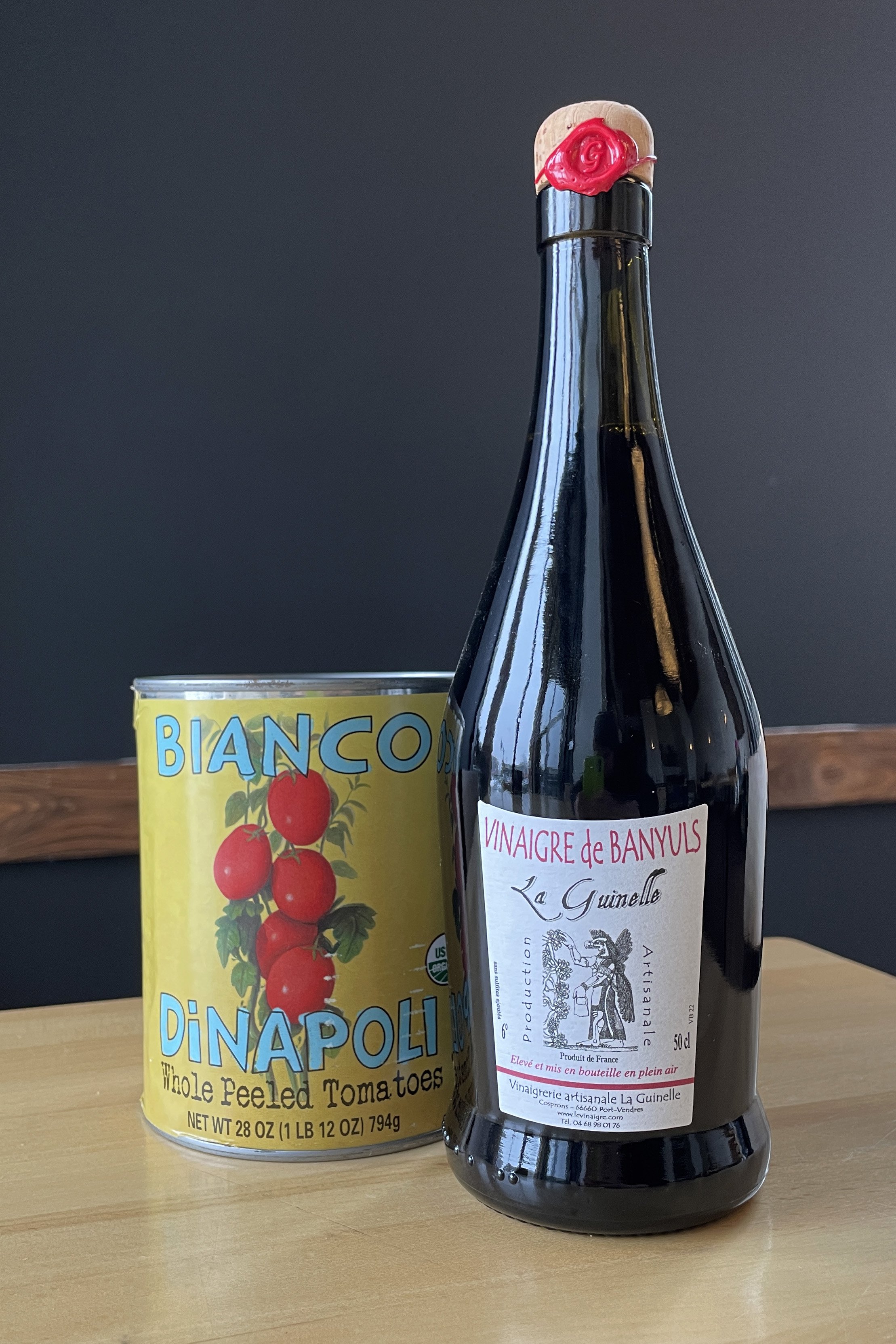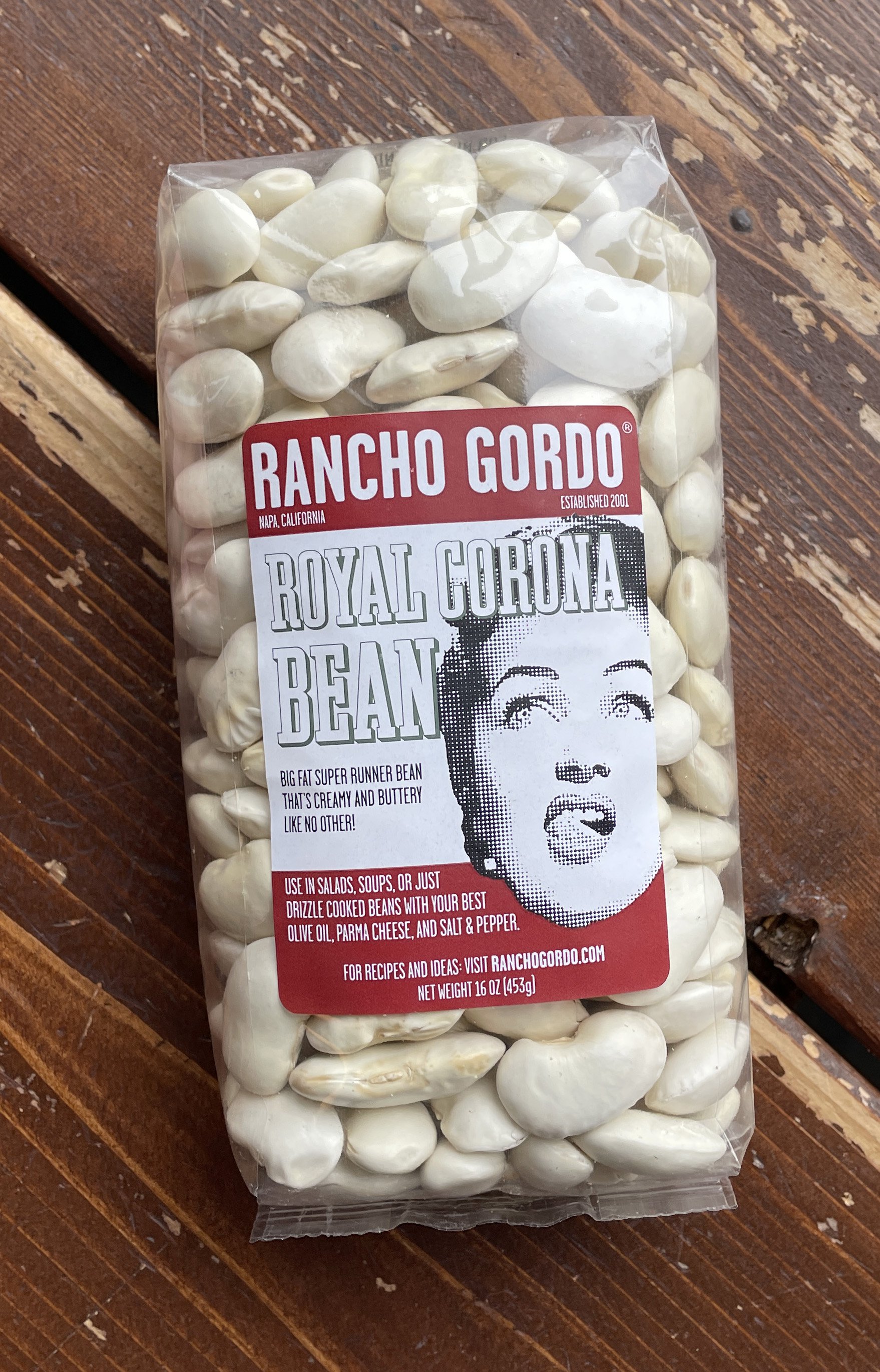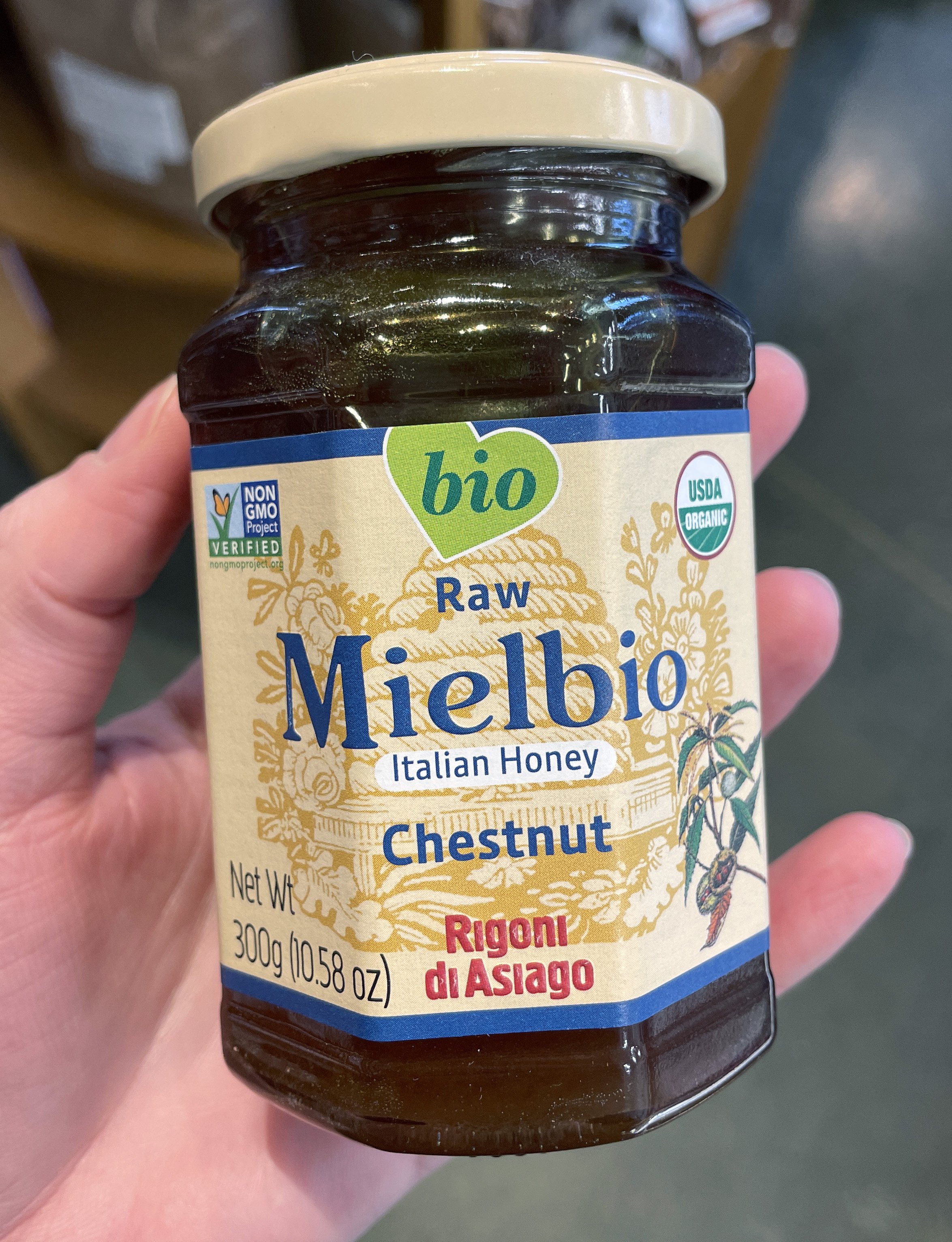by Austin Coe Butler
Obsessions are difficult to explain. By their nature they defy explanation and reside outside of reason. So I will just tell you that I have become obsessed with Rancho Gordo beans, and that this obsession has turned me into the kind of person who eats beans at least three times a week, has a bean club membership, buys clay pottery and cazuelas exclusively to cook beans in, and has about thirty pounds of dried beans in my larder. And being bean obsessed, one of my favorite bean dishes has become Gigantes Plaki, a Greek baked bean dish packed full of vegetables; it has a delicious agrodolce sauce of tomatoes, vinegar, and honey, and highlights glorious, giant beans. Made on a lazy Sunday or afternoon, you can eat Gigantes Plaki throughout the week, though I doubt it will last that long. The Greeks use a bean called Gigandes (literally “Giant”), but we sell these incredible Royal Corona beans from Rancho Gordo that are a perfect substitute. Royal Corona beans are truly regal beans that demand to be the center of any dish they’re in. When cooked, they can reach the size of your thumb. Their thick skins and densely creamy interior make them perfect in soups, stews, and salads, or marinated, baked, and sauced like pasta.
Ingredients:
1 bag (1 lb.) Rancho Gordo Royal Corona Beans
3 cloves garlic, sliced
1 leek, sliced
1 red onion, diced
¼ cup parsley, minced
¼ cup dill, minced
1 lb baby spinach, roughly chopped
1 stalk celery, diced
250 g Bianco di Napoli tomatoes, crushed or blended
2 tbsp Bianco di Napoli tomato paste
2 oz. honey, preferably a more savory type like pine, buckwheat, or chestnut honey
¼ cup La Guinelle Banyuls red wine vinegar
½ cup EVOO
½ lb. Essex Lesbos Feta
Check the beans for debris and rinse them. Soak them in plenty of cold, fresh water so that they are covered by at least two inches of water. Add a generous two finger pinch of salt to the water; this won’t make the beans tough. I don’t normally soak dried beans before cooking them, but because of the brobdingnagian size of these beans, a soak of at least eight hours, overnight, or even 24 hours helps them hydrate and cook more evenly and quickly. If you don’t soak them, expect the time it takes to parcook them to be anywhere from 1 to 5 hours. I choose to soak them for 24 hours and cook them in their soaking liquid with 1 bay leaf in an Instapot pressure cooker on high for 12 minutes. (If you choose to cook them in fresh water, add salt to the water again.) If you are using a traditional stovetop pot instead of a pressure cooker, the time to parcook the beans should take around an hour to an hour and a half. The beans need to be parcooked, though, otherwise they’ll turn to mush in the oven. Test them from time to time to see if they are still toothsome with a bit of graininess. A good indicator is to squeeze one and see if the cotyledons slip from the skin and easily split in half.
Meanwhile, prepare the spinach by salting it in a large bowl or colander and massaging it until wilted. Allow it to drain for 10 minutes then squeeze as much water out as you can. Roughly chop the spinach and reserve it in a large bowl.
Prepare the remaining vegetables and herbs, placing them in the large bowl with the spinach. For the leek, use only the white and light green parts. Split the leek in half and then cut ribbons about an ⅛ inch wide. Rinse these in a bowl of water to remove any sediment and allow them to sit for 5 minutes. The sand should sink to the bottom and you can skim the clean, floating leeks from the surface.
Once the beans are par cooked, remove them from their cooking liquid and place them in the large bowl with the vegetables. Add the red wine vinegar, olive oil, crushed or blended tomatoes, tomato paste, honey, and a generous pinch of salt. Fold them gently to combine and avoid splitting the beans. Pour this mixture into a 9x12 casserole dish. If there isn’t enough liquid to just cover the beans, add some of the bean broth or water. Place a sheet tray under the casserole dish to prevent any liquid from bubbling over onto the oven.
Bake in a 350º F oven and for an hour to an hour and a half. Test a bean for doneness. It should be creamy, buttery, without any graininess and a rich sweet and sour sauce should have formed.
Allow to cool for ten minutes before topping with feta, fresh parsley and dill, and, if desired, a long, golden thread of olive oil.
Questions, comments, or concerns about this recipe or others I’ve written? Write to me at austin@france44.com. Did you make this recipe? Take a photo of it and tag us in it @france44cheese! #CLAM




